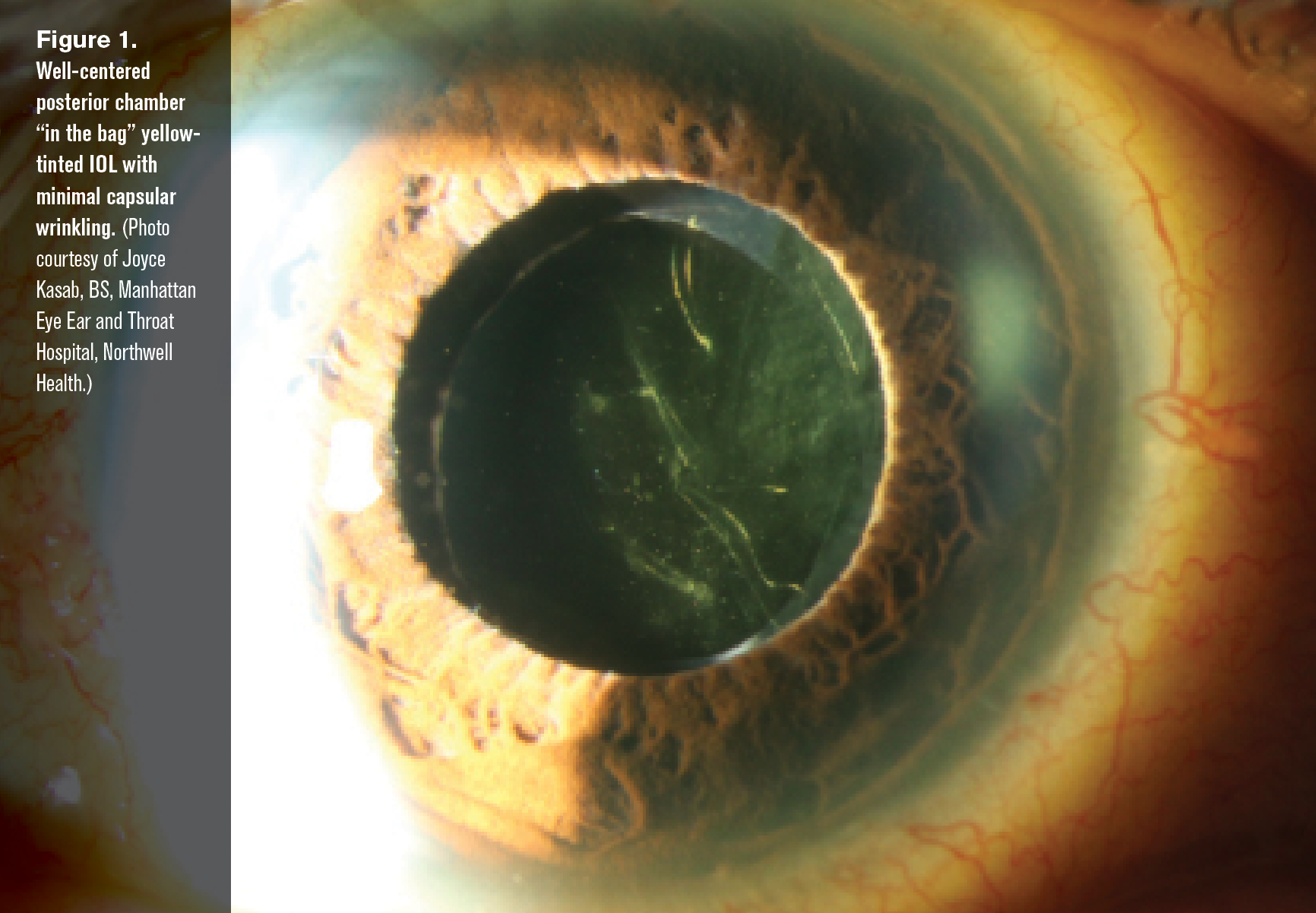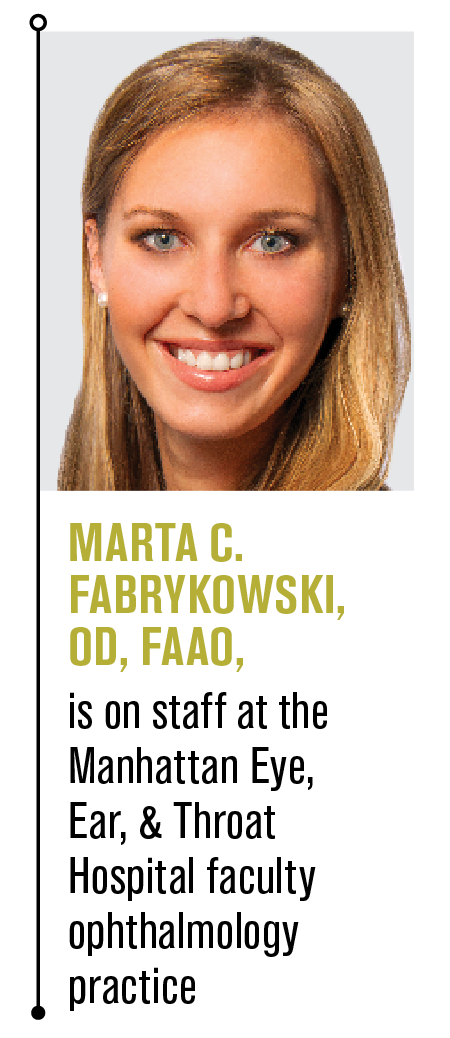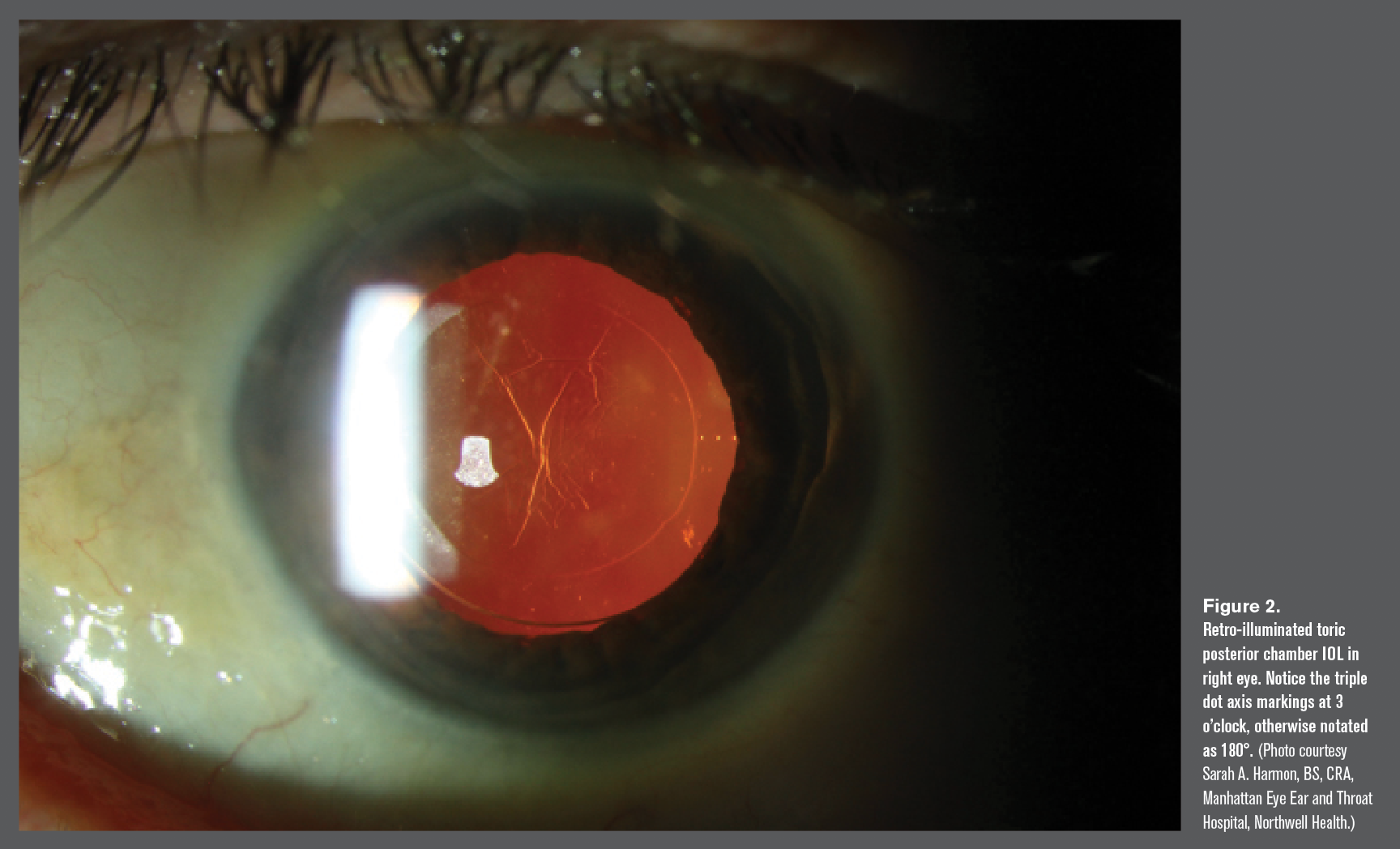Comanaging intraocular lens power calculations
Axial length, keratometry and the IOL constant in calculating IOL power


Figure 2

ODs have a vast amount of data that can add value before restorative refractive surgery, in choosing the IOL selection method and aims, as well as postoperatively.
Increasingly, cataract surgery is moving away from being viewed as solely a medically necessary reparative surgery and toward the category of visually restorative refractive surgery. In fact, for years we have been choosing intraocular lenses (IOL) to obtain a certain refractive effect, tailoring the approach to specific patient needs. This refractive goal choosing is where ODs can contribute at a high value.
As often back-end, comanaging physicians in the care of cataract patients, not only should ODs have training for postoperative care, but they should have knowledge of presurgical discussion on the IOL selection method and have confidence to assist in reaching excellent refractive outcomes.
Related: Laser vision correction: Look backward to move forward
When longtime patients leave their OD practice for a cataract consultation, ODs have scores of refractive data-from spectacle prescriptions to habitual wear, to patient preferences and hobbies, to contact lens history and ocular dominance. ODs have valuable knowledge on the front end, leading up to surgical discussions for aim and desired outcomes. Familiarity with the patient and data is priceless for predicting the happiest long-term refractive outcome for the patient-which is the unified end goal for both ODs and MDs.
Here, I will discuss basics of the components important for choosing IOL power, with a brief review of common lenses and refractive goals. Although there are various strategies for best calculation of IOL power and the residual refractive outcomes, all involve a generally standard order of operations.
The general term for eye measuring for IOLs is “biometry,” which encompasses the measurement of the two most important variables: axial length (AL) and keratometry (K).
Related: Unlock the potential of refractive surgery
Axial length
Axial length (in mm) measurement is a crucial step in IOL power calculations. If the length errs by 0.1 mm, it equates to an approximately 0.27 D error in the spectacle plane1-therefore, accuracy is a necessity. There are two main methods to measure AL: ultrasound and optical biometry.2
Most basically, ultrasound measures the transit time it takes to deflect off multiple surfaces of the eye anteriorly from the front and back of the cornea, the front and back of the lens, and posteriorly to the retina.
Related: Retinal detachment seals itself
The axial length is calculated from the front of the cornea to the retina.3 This ultrasound method can be performed via immersion (essentially a water bath over the cornea) or contact (probe directly on an anesthetized cornea), and was a mainstay until optical biometry came onto the scene in 1998.1
Optical biometry, without water or direct contact on the eye, has great accuracy; however, it measures to the retinal pigment epithelium (RPE) as opposed to the retina with the ultrasound, so the AL is a bit longer.1 This distinction can be important if comparing measurements. Preferences vary among surgeons; adept use of either ultrasound or optical biometry can provide comparable results.
Related: Cataract surgery problem solving: Is technology the answer?
Keratometry
Keratometry (in D), or the measure of the corneal power, is a very important component of the IOL calculation. Its parameters are the curvature of the anterior corneal surface expressed comparatively from the steepest to flattest meridians, usually in diopters but can also be in millimeters of the radius of curvature.4
Keratometry is not necessarily a straightforward process, and there are multiple ways to measure. Using a manual keratometer was historically the method of choice for many years and likely the method ODs learned (or are still learning) in optometry school-and still many rely on measuring using that device.
Related: 5 exam findings that should spur a neuro referral
Many surgeons and ODs alike now also use an autorefractor, and still others rely on topography taken by optical biometry machines.1 These various devices sometimes measure different portions of the cornea-some measure a very central area, some a larger diameter, and some the most central island.4 Often, measuring with multiple instruments and comparing to a full topography, where flat and steep areas can be visualized, may be the most accurate.
IOL constant
The term “IOL constant” is a bit cofounding, as the number is neither a true constant nor does it relate only to the IOL.2 At its core, the number is an abstract “fudge factor” that adjusts IOL predictions for possible errors arising from biometry measurement devices, patient population, and surgical technique.2 Each manufacturer (i.e., Zeiss, Alcon, etc.) publishes its own list of IOL constants, typically as related to ultrasound axial lengths, though many formulas now have optical biometry equivalents.2 If needed, these are all available in user manuals both online and in print for easy reference.
Related: Recognize signs and treatment for patients with persistent PSP
Formulas
Putting the above components together takes us to the calculation. The formulas in widest use utilize both axial length and keratometry measurements as well as the IOL constant.2
The top three formulas each work best for a specific axial length: Hoffer Q (>21.5 mm), SRK/T (>26.0 mm) and, for the interval in between, there are many formulas, although the Holladay 1 formula is preferred for its small edge of accuracy.2 Of course, there are modifications to these formulas and others not listed that are indicated for various reasons (e.g., post-myopic or -hyperopic refractive surgery eyes demand calculations not listed here).
Related: Minimize symptoms of dry eye disease in refractive surgery patientsIOL design and manufacture
Much like glasses, lenses are held to the ANSI Z80-a standard, and IOLs are held to the standards stated in ISO 11979-2, leaving little room for error.2 IOLs range from around –5.00 D (for very myopic eyes) to over +40.00 D (very hyperopic eyes), with most falling within the range of +17.00 to +22.00 (Alcon).
Within the spectrum of IOLs, the most common are monofocals, aiming for a single fixed distance. These are both spherical and toric: the toric ranging in dioptric astigmatic correction between 1.03 D to -4.11 D in the corneal plane and can be rotated to any axis.5 Toric IOLs, much like toric contact lenses, are marked on the axis, which can be seen after dilation (see Figure 2).
Next are multifocal lenses, which can correct adds from roughly up to +4.00 D in the lenticular plane, with some requiring the use of the dominant or non-dominant eye much like multifocal contact lens fitting.6
Related: Measurements matter in cataract surgery, the new refractive procedure
IOLs come in yellow UV-protectant and clear UV-protectant varieties, with some retinal specialists preferring the yellow lenses, believing that they have superior blue-blocking protection.7 Although studies have shown that patients with a yellow-tinted lens in one eye and clear lens in the other do not notice the difference,8 surgeons generally try to match the tint. New on the market is a multifocal toric lens, which has found varying levels of success.9
Calculating the IOL power using the above formulas and variables is well and good; however, these calculations can be completed only after optimal refractive goals have been established, which is where ODs can truly shine.
Related: Marta C. Fabrykowski, OD, FAAO-Manhattan Eye, Ear, and Throat Hospital in New York City
Does the patient want symmetrical distance correction in both eyes? Or, has she been a low myope her entire life and has, for the past few decades, enjoyed reading with her glasses off and would prefer to stay that way, wearing light distance glasses for driving? Is he an artist who would like an intermediate distance aim-ideal for a drafting table or painting-without glasses? Perhaps she is right-eye dominant and has successfully worn monovision contact lenses for the last 30 years? Maybe she would then enjoy distance in the right eye and an intermediate or reading correction in the left? Is it a patient who likes the latest and greatest technological innovation and may be interested in multifocal IOLs? Or a multifocal toric?
Years of examination, relationship building, and life insight can make choosing the aim a much easier feat and can direct the post-op refraction to higher probability of happiness and success if the OD, MD, and patient are on the same page and know the expected outcome. This is where ODs can also shine with insight on the front-end decision-making-not just postoperatively.
More by Dr. Fabrykowski: Postop considerations for pseudoexfoliation after cataract surgery
References:
1. Olsen T. Intraocular Lens Power Calculation. J Cataract Refract Surg. 2009;35(12): 2176-2177. Sahin A, Hamrah P. Clinically Relevant Biometry. Curr Opin Ophthalmol. 2012;23(1):47-53.
2. Sheard R. Optimising Biometry for Best Outcomes in Cataract Surgery. Eye. 2014;28:118-125.3.
3. Mylonas G, Sacu S, Buehl W, Ritter M, Georgopoulos M, Schmidt-Erfurth U.. Performance of Three Biometry Devices in Patients with Different Grades of Age-Related Cataract. Acta Ophthalmol. 2011;89(3):e237-e241.4.
4. Khan L, Sharma B, Gupta H, Rana R. Accuracy of biometry using automated and manual keratometry for intraocular lens power calculation. Taiwan J Ophthalmol. 2018;8(2):93-98.5.
5. Khan MI, Ch’ng SW, Muhtaseb M. The use of toric intraocular lens to correct astigmatism at the time of cataract surgery. Oman J Ophthalmol. 2015;8(1):38-43.6. Sachdev GS,
6. Sachdev M. Optimizing outcomes with multifocal intraocular lenses. Indian J Ophthalmol. 2017;65(12):1294-1300.
7. Hayashi K, Hayashi H. Visual function in patients with yellow tinted intraocular lenses compared with vision in patients with non-tinted intraocular lenses. Br J Ophthalmol. 2006;90:1019-1023.
8. Greenstein VC, Chiosi F, Baker P, Seiple W, Holopigian K, Braunstein RE, Sparrow JR. Scotopic sensitivity and color vision with a blue-light-absorbing intraocular lens. J Cataract Refract Surg. 2007;33(4):667-672.9.
9. Lehmann R, Modi S, Fisher B, Michna M, Snyder M. Bilateral implantation of +3.0 D multifocal toric intraocular lenses: results of a US Food and Drug Administration clinical trial. Clin Ophthalmol. 2017;2017(11):1321-1331.

Newsletter
Want more insights like this? Subscribe to Optometry Times and get clinical pearls and practice tips delivered straight to your inbox.